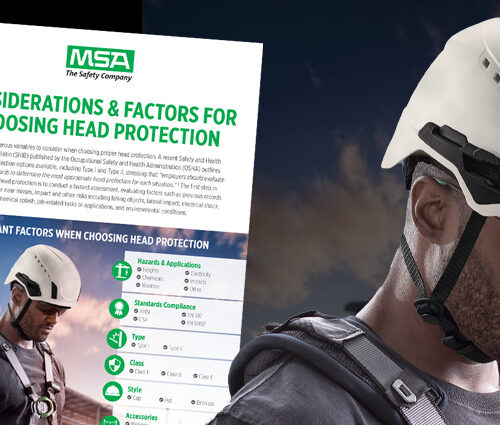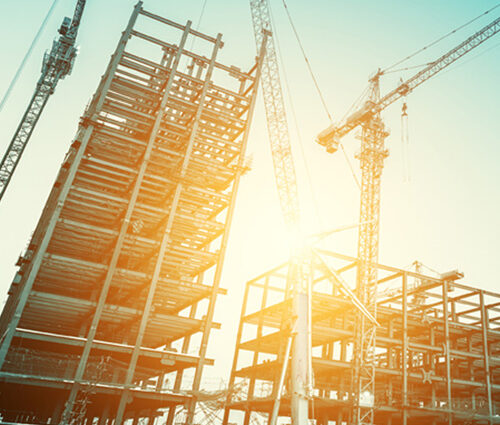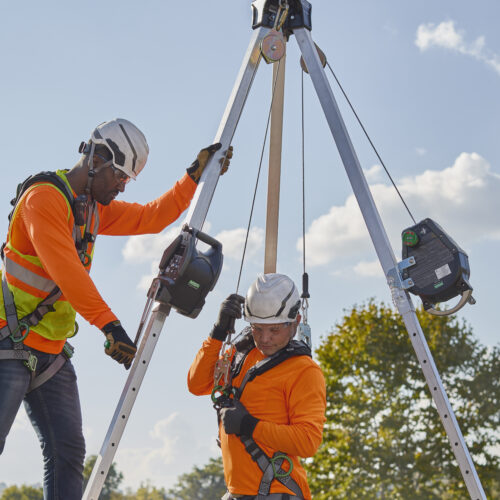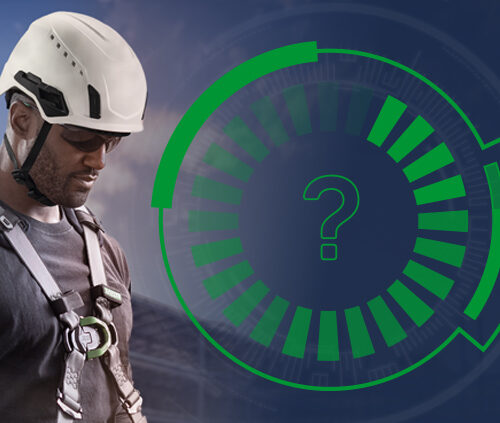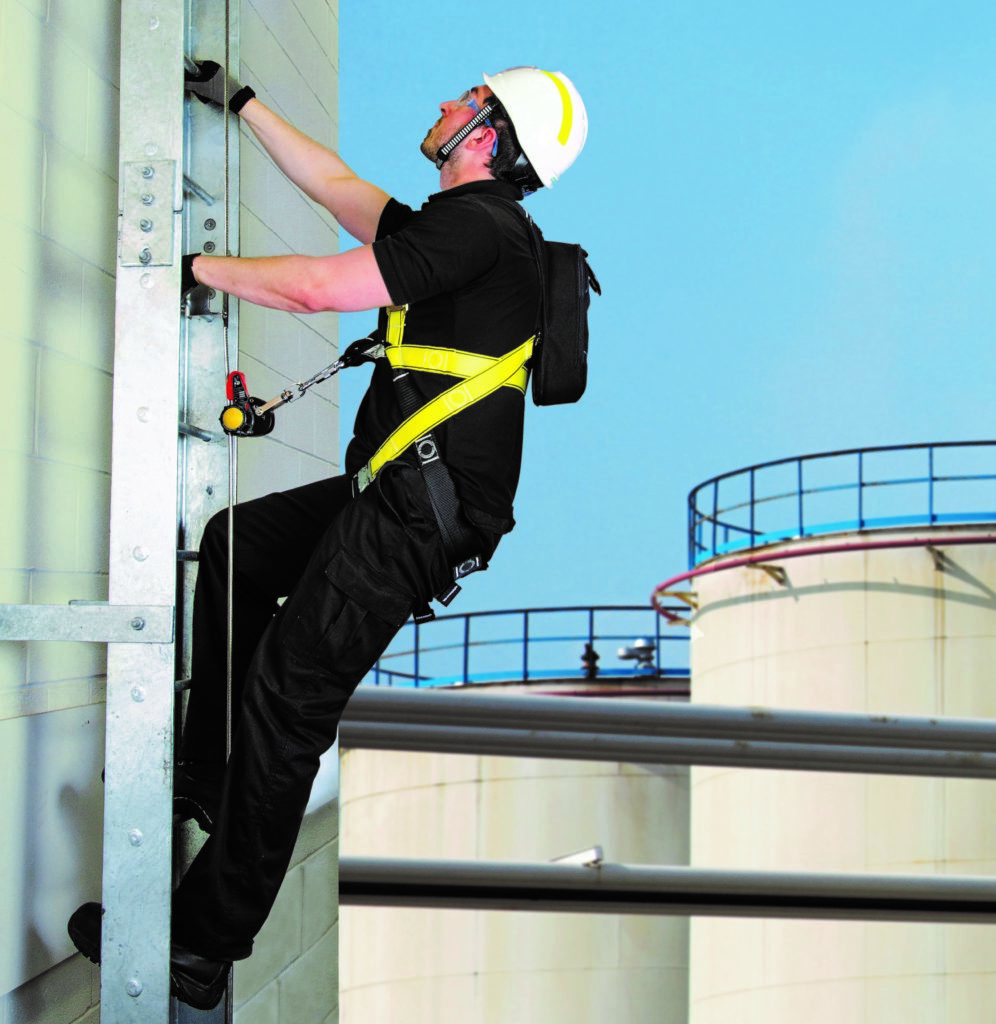
Look at many commercial and industrial silhouettes and you’ll see that distinctive lump on the side of tall, vertical fixed ladders. Ladder cages have been around for a long time, but that’s about to change.
According to OSHA standard CFR 1910.27, a fall protection device was required on every fixed ladder extending 20 feet or more for general industry. However, 29 CFR 1910.28 has replaced that standard, with a phase-out timetable for employer compliance.
The standard for the construction industry (29 CFR 1926.1053) required fall protection be installed at heights over 24 feet. In both general and construction industries, the most often used form of fall protection was a cage.
OSHA’s new standard — 29 CFR 1910.28 – effective January 17, 2017, for general industry makes significant changes to the requirements. The new height for general industry is now 24 feet, identical to the construction standard which has two effects:
- It aligns more closely to the ANSI standard, A14-3.
- It clarifies that fall protection is required at heights over 24 feet in every industry.
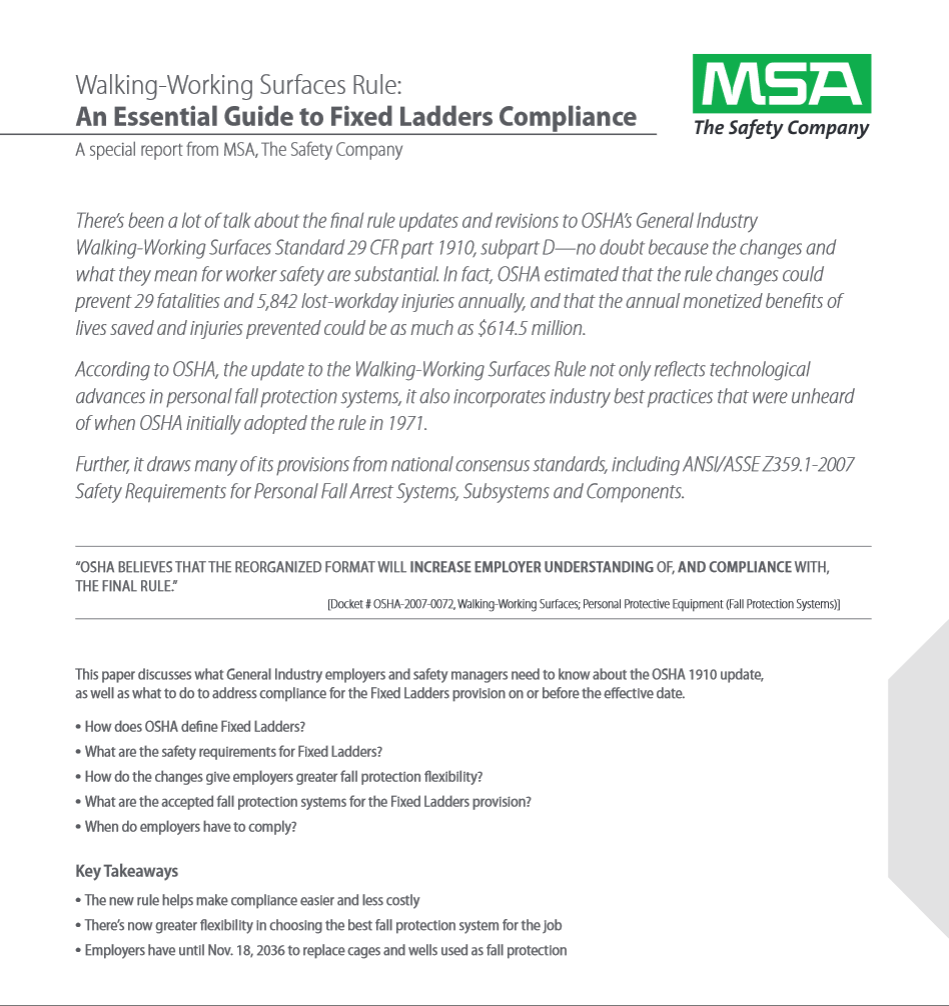
Save this info for future reference and share with your team by downloading the white paper below.
Download the WhitepaperThe BLS Census of Fatal Occupational Injuries (CFO) listed falls as a leading cause of workplace fatalities. Falls were second only to highway incidents as the cause of fatal injuries from 1999 to 2010. From 2006 to 2012, about one-third of all fatal falls in private industry were falls to a lower level.
Fall protection is of vital concern of OSHA’s and the revised standard addresses it.
However, by November 19, 2018, ladder cages will not be approved for use as fall protection devices on any new installations, regardless of industry. Existing cages can still be used until November 18, 2036, grandfathered in by the standard.
That said, as with any codes or standard, any cages on fixed ladders that must be repaired or replaced must be done in accordance with the new standard. That means that a ladder safety system must be installed. A vertical lifeline cable system is an option that’s easy to install and deploy.
By 2036, however, all cages on all fixed ladders are no longer in compliance as fall protection devices, with fall protection provided by a personal fall arrest system or other ladder safety system.
It’s possible a cage may remain in place as long as it doesn’t interfere with the approved fall protection system.
Personal Fall Arrest: The Best Solution
One major drawback (among many) to using a cage for fall protection: a worker must actively interact with the ladder for it to be effective. In other words, the worker must do something. In many cases, that may be difficult, if not impossible.
For example, if a rung breaks or a worker’s foot slips off the ladder, the human and perfectly natural thing to do is… panic. The abruptness of the incident takes him or her by surprise. A quick decision must be made, almost without thinking. We’re humans, not robots. We can be taught to do the right thing, but we’re not necessarily hardwired to get it done. Humans make mistakes. That’s where a personal fall protection system shines.
Once the worker puts on the gear and hooks it up, his role is pretty much done. The system works automatically should the worker fall. In fact, even if the worker is rendered unconscious, the personal fall protection system jumps into play all by itself.
A ladder is designed and built for the ‘average’ person, whatever that means. A personal fall protection system is adaptable. The harness used is chosen and adjusted specifically for the person wearing it.
]One other thought: a cage is rigid, unmoving, and unchangeable. What you build is what you have. Workers are not carbon copies of each other. They come in all shapes and sizes. A ladder cage that’s suitable for a large, robust worker may not work as well for the skinny guy on the crew. A ladder is designed and built for the ‘average’ person, whatever that means. A personal fall protection system is adaptable. The harness used is chosen and adjusted specifically for the person wearing it.
The rigidity of the cage creates a hazard as well. Many incidents have proven that. Sadly, broken limbs and amputations have been reported in some instances. When a ladder is outfitted with a personal fall arrest system, the fall is controlled, stopping quickly with the least amount of trauma to the body.
So, what components comprise a ladder’s personal fall arrest system?
The basic PFL… with a twist
If you’ve used PFLs or SRLs, you already have the basic concepts. Note that a standard PFL or SRL can be used as long as other criteria are met, including anchorage and attachment points. This is where the two systems differ.
In a ladder fall arrest system, the connecting device is actually a stationary component. There are two types: a fixed cable or a track system, sometimes called a rail. Both types run the entire height of the ladder, and in some cases, longer.
Ladders that terminate at the landing point need to be extended so that the worker can exit the ladder safely. The cable or track also serves as the anchor point to the ladder. A fall arrest device attaches to the cable, while the device clips into the rail system. The harness attaches to the fall arrest with a D-ring.
However, the harness is constructed with a D-ring on the front of the webbing. This keeps the attachment close to the worker’s body, a requirement of the OSHA regs. The standard states that the attachment must be no longer than nine inches. Therefore, attaching to a back-mounted D-ring won’t meet the requirements.
A cable or rail system allows the fall arrest to glide smoothly while the worker ascends or descends the ladder. This keeps both hands free for climbing. But in the event of a fall, the device quickly grabs the cable or rail and stops the worker’s unplanned descent within seconds. This keeps the arresting force (or the amount of force on a body as a result of falling) minimal and reduces the potential risk of injury. Add to that the fact that a fallen worker can usually self-rescue and you can see the massive benefits of a ladder-mounted personal fall arrest system.
Don’t wait. Make ladder climbing safer today.
Cages installed before November 19, 2018, are grandfathered in. If you already have a ladder cage in place, you can still install a personal fall arrest system inside the cage, attached to the ladder. The system will work seamlessly with the cage. It will not interfere with workers as they ascend and descend.
You want your workers to keep their minds on task and not worry about their protection. Fall arrest systems give them reassurance and peace of mind. And should they fall, you want a system in place that will minimize the impact, both on their bodies and their lives.
Sure, you have plenty of time to change from a cage to a personal fall arrest system and avoid noncompliance. But in reality, the time to change is now.


